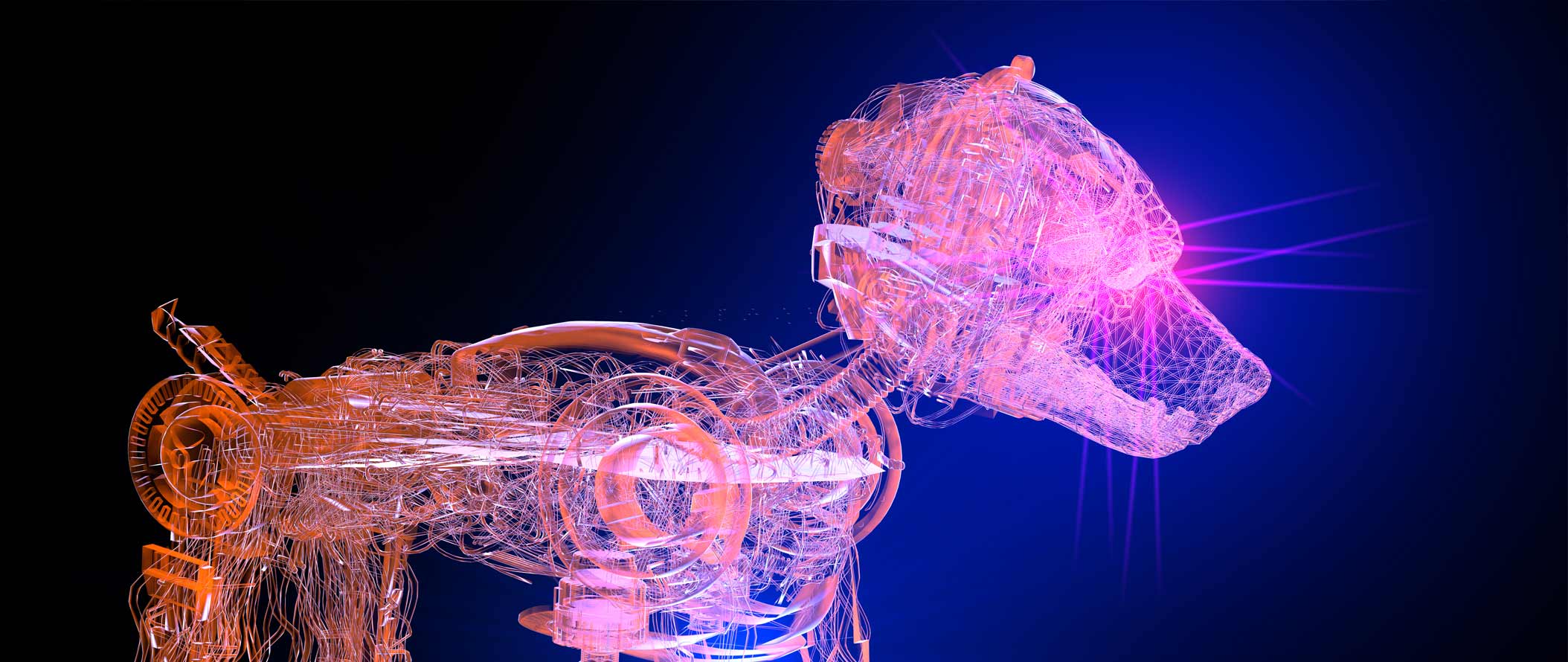By 2022, close to four million industrial robots will be working in factories worldwide, according to the International Federation of Robots. It's part of a continued push towards smart factories, an unprecedented level of automation enabled by a combination of 5G connectivity, Industrial Internet of Things, smart supply chains, artificial intelligence, and machine learning.

At Ford's Van Dyke Transmission plant in Michigan, a four-legged robo-dog named Fluffy rides around on the back of another robot called Scouter, hopping off to take 3D scans of tough-to-reach areas in the factory.
This isn't your parents' auto plant. In fact, it may feel more like futuristic sci-fi, with a roving robo-dog taking over rote tasks from human workers.
By 2022 close to four million industrial robots will be working in factories worldwide.
"We used to use a tripod, and we would walk around the facility stopping at different locations, each time standing around for five minutes waiting for the laser to scan," Mark Goderis, Ford's digital engineering manager, says in a news release. "Scanning one plant could take two weeks. With Fluffy's help, we're able to do it in half the time."
By 2022, close to four million industrial robots will be working in factories worldwide, according to the International Federation of Robots. It's part of a continued push towards smart factories, an unprecedented level of automation enabled by a combination of 5G connectivity, Industrial Internet of Things (IIoT) technology, smart supply chains, artificial intelligence (AI) and machine learning (ML).
According to Epicor's 2020 Global Growth Index survey of 2,000 business leaders across the globe, these technologies will have a direct, significant impact on business growth and competitiveness in the next year and a half. They're also giving humans a cooler role to play in manufacturing, automaking, and distribution.
Here's why:
Fluffy and Scouter's ultra-mundane job is scanning the plant floor to help engineers reconfigure and adjust the efficiency of the factory. It's the sort of thing that takes weeks of walking around, setting up tripods and waiting. If the robot pilot goes well at the Van Dyke plant, Goderis says, the robots could eventually be operated remotely, " … programming them for plant missions and receiving reports immediately from anywhere in the country."
Robots will help to lead a wave of specialization. According to the Growth Index, a lot of specialization will come from within; 40% of those polled say they need to invest in training and educating current staff to take advantage of the wave of new technology.
In the Growth Index, more than half of those polled said job candidates feel a company is more modern when it uses mobile apps. The same number said they value the ability to use company applications on mobile devices at work.
Fluffy is a prime example of the cool direction manufacturing is going. Paula Wiebelhaus, a digital engineer at Ford and the robo-dog's handler, controls the robot with a gaming-like device, allowing her to remotely see the camera view and set Fluffy's path.
AI is one of the top three tech trends likely to have a positive, direct impact on growth over the next 12–18 months, according to the Growth Index. Robots are a clear benefactor of that growth.
Fluffy, which is leased from Boston Dynamics, isn't powered by ML. It employs what the company calls "athletic AI." That means Fluffy understands the nuances of movement. If it falls, it can right itself. It can change positions from crouching to standing. It can navigate grates, steps, and inclines. And most importantly, it can maintain a safe, set distance from objects—including humans—to avoid banging into non-robot coworkers.
While Fluffy is moved around by a game controller, smart factories are also embracing cobots, collaborative robots that safely work side-by-side with their human colleagues. Cobots can be programmed to assist their coworkers with everything from loading pallets for distribution, to preparing automotive parts for fastening.
Cobots add a level of efficiency to manufacturing by operating on their own mandate and reducing tech-oriented training needs for certain human workers. According to the Growth Index, 41% of respondents said working more efficiently will help their businesses overcome growth challenges in the next 12 months.
A third of those surveyed in the Growth Index say they need to hire additional staff with new skills, as well as upskill and reskill existing workers, to take advantage of Industry 4.0 and 5.0 technology. Many of those workers will get to work with robots—which is an exceptionally cool opportunity, especially once any initial reservations are quelled.
In a recent interview with the Detroit News, Fluffy's handler, Wiebelhaus, talked about the attachment she has to her new role. "I guess I was kind of surprised that I feel as close to it [Fluffy] as I do," she told the paper. "I won't be the handler forever. Other people will be trained to handle the dog. I think that's going to be tough for me," Wiebelhaus explains. "It's like your favorite car or someone borrowing your favorite dress."
Wiebelhaus' attachment to her role as a handler isn't surprising. Robots are meant to be lifelike. In the end, it's that ability to accomplish nuanced human tasks that gives them their cool factor—and makes humans' jobs a little cooler, too.